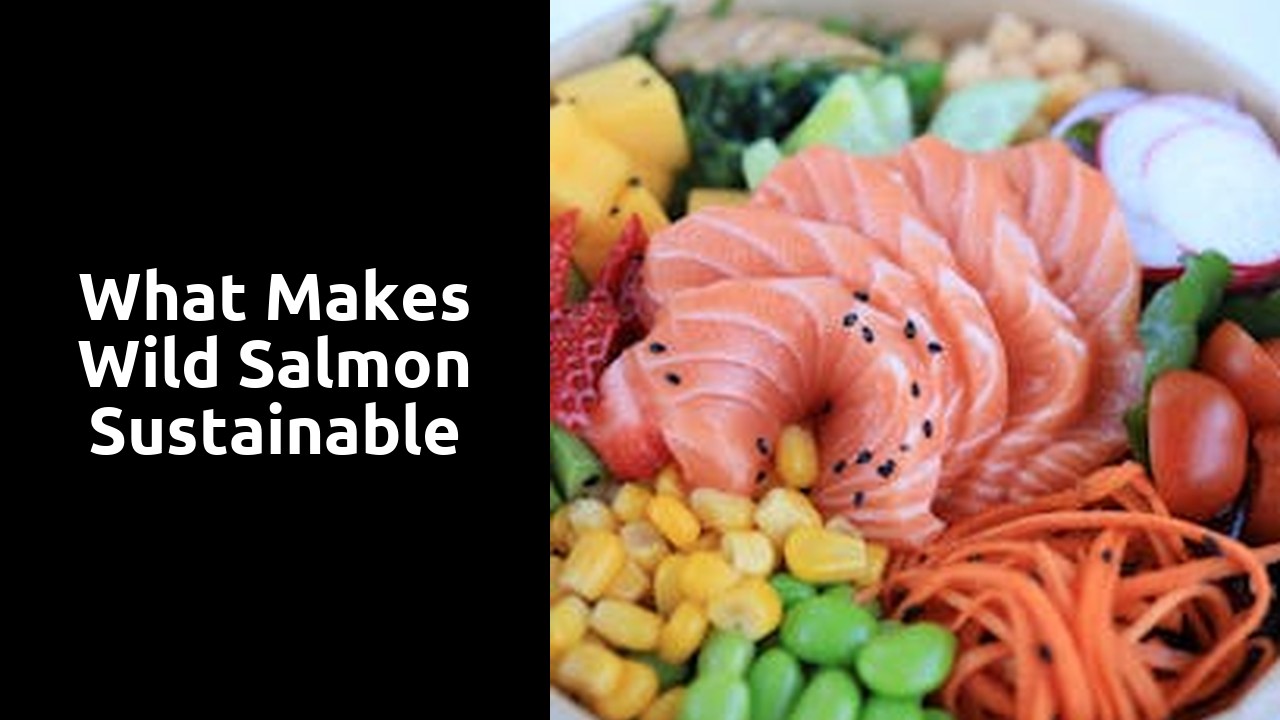What Makes Wild Salmon Sustainable

Certification Programs for Sustainable Wild Salmon
Certification programs play a crucial role in ensuring the sustainability of wild salmon fisheries. These programs provide a way to assess and confirm that fishing practices meet specific criteria that support the long-term health of wild salmon populations. By adhering to these standards, fisheries can demonstrate their commitment to responsible and environmentally-friendly practices, which is essential for the preservation of this valuable resource.
One widely recognised certification program is the Marine Stewardship Council (MSC), which sets strict requirements for sustainable fishing practices. Through MSC certification, consumers can make informed choices by selecting products that have been sourced from well-managed fisheries. This not only promotes the conservation of wild salmon but also encourages the fishing industry to operate in a way that supports the natural ecosystem and ensures the continued availability of this prized fish.
Standards and Regulations
Standards and regulations play a crucial role in ensuring the sustainability of wild salmon populations. Various governing bodies and organisations have established stringent guidelines that must be adhered to by fisheries and aquaculture operations. These standards cover a wide range of aspects including fishing methods, quotas, handling practices, and traceability measures. Compliance with these regulations is essential to protect the natural habitats of salmon and to prevent overfishing, which could lead to detrimental effects on the ecosystem.
By setting clear standards and regulations, authorities can monitor and manage the harvesting of wild salmon to maintain healthy population levels. These measures help to prevent illegal fishing practices, ensure the wellbeing of the fish stocks, and protect the livelihoods of communities that depend on salmon fishing for economic sustenance. Additionally, strict regulations also contribute to the overall quality of the product, assuring consumers that they are purchasing sustainably sourced wild salmon that meets ethical and environmental standards.
The Economic Importance of Wild Salmon
The economic value of wild salmon extends far beyond its nutritional benefits. In regions where salmon fisheries are prevalent, these fish play a crucial role in supporting local economies and livelihoods. From commercial fishing operations to tourism centred around salmon viewing and sport fishing, the industry offers a spectrum of employment opportunities and contributes significantly to revenue generation.
Moreover, the economic ramifications of sustainable wild salmon practices are twofold. By adhering to responsible fishing techniques and conservation measures, stakeholders not only ensure the longevity of salmon populations but also safeguard the income and employment opportunities reliant on these fisheries. Thus, the economic importance of wild salmon transcends mere monetary value, encompassing a web of interconnected economic dependencies that underpin the livelihoods of many communities.
Employment and Revenue Generation
Wild salmon fishing not only provides vital employment opportunities but also contributes significantly to the economy. In regions where wild salmon fishing is prevalent, many people rely on this industry for their livelihoods. From commercial fishermen to processing plant workers, the sector supports a wide range of jobs that are crucial for the local communities.
Furthermore, the revenue generated from wild salmon fishing plays a crucial role in sustaining the economy of these regions. The sale of wild salmon products, both locally and internationally, brings in substantial income that not only supports the fishing industry but also has ripple effects on other sectors such as tourism and hospitality. As a result, wild salmon fishing is not just about catching fish; it is a cornerstone of the economy in many coastal areas.
Conservation Efforts for Wild Salmon
Conservation efforts for wild salmon are crucial in ensuring the long-term sustainability of these iconic fish species. One key aspect of conservation is the restoration of spawning grounds, which are essential for the successful reproduction and survival of salmon populations. By rehabilitating these areas and ensuring they are free from pollution and human interference, we can help maintain healthy salmon stocks for future generations to enjoy.
In addition to restoring spawning grounds, another important conservation effort is the implementation of measures to mitigate the impact of climate change on wild salmon habitats. As temperatures rise and weather patterns become more erratic, salmon face increasing challenges in adapting to their environment. By working to protect and preserve the natural habitats of wild salmon, we can help these resilient fish continue to thrive in the face of changing climatic conditions.
Restoration of Spawning Grounds
Efforts aimed at the restoration of spawning grounds for wild salmon are crucial in ensuring the long-term sustainability of these valuable fish populations. By restoring these critical habitats, we provide the necessary conditions for salmon to successfully reproduce and thrive in their natural environment. Restored spawning grounds help to maintain and even increase wild salmon populations, ensuring the continued availability of this important food source for both humans and other wildlife.
Restoration projects often involve removing obstacles to fish migration, such as dams and culverts, and improving water quality in spawning areas. These interventions not only benefit wild salmon but also contribute to the overall health of the aquatic ecosystem. By restoring spawning grounds, we are not only safeguarding the future of wild salmon but also promoting biodiversity and the well-being of the entire ecosystem. Effective restoration efforts require collaboration between government agencies, conservation organisations, and local communities to ensure the success of these vital projects.
Related Links
Review: The Environmental Impact of Aquaculture PracticesWhy Consumer Awareness is Key to Sustainable Seafood Choices
The History of Overfishing and Depletion of Wild Salmon Stocks
Top 10 Sustainable Seafood Choices for Consumers
What to Look for in Sustainable Seafood Certifications
Why Overfishing is a Threat to Wild Salmon Stocks
What Are the Differences Between Wild and Farmed Salmon
How to Identify Wild vs. Farmed Salmon